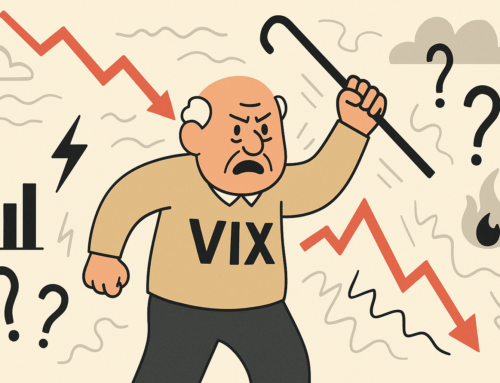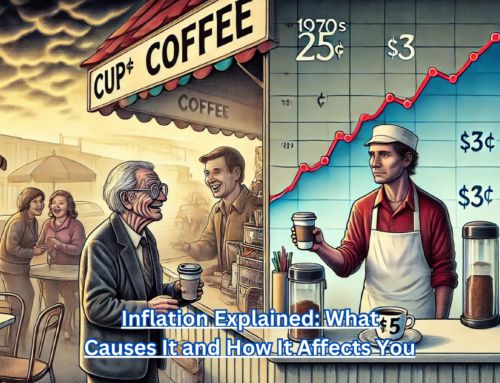In the quiet of a Sunday evening, families gather around dinner tables, discussing the week’s events, planning for the future, and sharing aspirations. Yet, unbeknownst to many, the global debt crisis and economic stability are at risk, posing significant challenges for households and markets alike. Yet, unbeknownst to many, a looming shadow threatens these dreams—a shadow cast by the escalating global debt crisis. This silent adversary, characterized by unprecedented levels of government borrowing, poses significant risks to economic stability worldwide.
The Anatomy of the Global Debt Crisis and Economic Stability
Dissecting the components of global debt is essential to comprehend the gravity of the situation. As of 2025, the world grapples with a staggering $300 trillion in debt, encompassing government, corporate, and household obligations. This figure surpasses the global GDP by over 3.5 times, indicating that our financial commitments far outweigh our economic output.
Government borrowing constitutes a significant portion of this debt. Developed and developing nations have resorted to extensive borrowing to finance infrastructure projects, social programs, and, more recently, pandemic-related expenditures. While such spending can stimulate economic growth, excessive debt accumulation without corresponding revenue generation leads to fiscal imbalances. This imbalance can trigger a vicious cycle of borrowing to service existing debt, leaving fewer resources for essential public services.
The Domino Effect on Economic Stability
High levels of government debt can have cascading effects on economic stability:

- Investor Confidence: As debt levels rise, investors may perceive a higher risk of default, leading to increased borrowing costs for governments. This scenario can strain national budgets, forcing cuts in critical areas like education and healthcare.
- Currency Devaluation: Excessive debt can lead to a loss of confidence in a nation’s currency, causing devaluation. A weaker currency makes imports more expensive, fueling inflation and eroding citizens’ purchasing power.
- Crowding Out Private Investment: When governments borrow heavily, they compete with the private sector for available capital. This competition can lead to higher interest rates, discouraging businesses from investing in expansion and innovation, thereby stunting economic growth.
- Social Unrest: Austerity measures implemented to manage high debt levels often result in reduced public services and social benefits. Such measures can lead to public dissatisfaction, protests, and, in extreme cases, political instability.
The Current Administration’s Economic Management
In recent months, the U.S. administration has adopted a series of aggressive economic policies aimed at restructuring the nation’s financial landscape. These measures include imposing tariffs on major trading partners, implementing a federal hiring freeze, and enacting mass government layoffs. While intended to reduce public spending and recalibrate the economy, these actions have had unintended consequences.
One notable outcome has been a significant decline in consumer confidence and a slowdown in economic activity. The Federal Reserve Bank of Atlanta forecasts a potential 2.8% GDP contraction, signaling a looming recession. This contraction has led to heightened volatility in financial markets, with the stock market experiencing sharp declines.
The Bond Market Strategy: A Double-Edged Sword
Amidst the stock market downturn, the administration appears to be redirecting investor attention towards the bond market. By creating an environment of uncertainty in equities, investors seek refuge in government bonds, traditionally viewed as safer assets. This shift increases demand for bonds, subsequently driving up their prices and pushing yields down.
Lower bond yields can provide the Federal Reserve with the leeway to cut interest rates, aiming to stimulate economic activity. However, this strategy is fraught with risks:

- Reduced Income for Investors: Lower yields mean diminished returns for bondholders, particularly affecting retirees and conservative investors who rely on fixed-income securities.
- Inflationary Pressures: Excessive monetary easing can lead to inflation, eroding purchasing power and potentially leading to a cost-of-living crisis.
- Debt Refinancing Costs: The administration wants rates lowered so debt refinancing will be less expensive, allowing the government to manage its financial obligations more effectively
Global Implications of Rising Debt
The repercussions of high government borrowing extend beyond national borders:
- International Trade Tensions: Nations with high debt levels may resort to protectionist measures, such as tariffs, to protect domestic industries. These actions can escalate into trade wars, disrupting global supply chains and economic growth.
-
Currency Wars: To manage debt, countries might devalue their currencies to boost exports. Such competitive devaluations can lead to instability in foreign exchange markets, affecting global financial stability.
- Debt Defaults: As borrowing costs rise, some nations may struggle to service their debt, leading to defaults. Such events can trigger financial contagion, where the economic distress of one country spreads to others, particularly those with significant financial linkages.
Historical Lessons and the Path Forward
History offers cautionary tales of nations that succumbed to the perils of excessive debt. For instance, the Latin American debt crisis of the 1980s saw countries like Mexico defaulting on their debt, leading to a “lost decade” of economic stagnation. More recently, the European debt crisis highlighted the fragility of economies burdened by high debt, with Greece’s fiscal woes threatening the stability of the entire Eurozone.
To navigate the current debt landscape, policymakers must adopt a multifaceted approach:

- Fiscal Responsibility: Governments should prioritize sustainable spending, ensuring that expenditures align with revenue generation. This balance requires prudent budgeting and the elimination of wasteful spending.
- Economic Diversification: Reducing reliance on a narrow range of industries can buffer economies against sector-specific downturns. Diversification fosters resilience and creates multiple revenue streams.
- Structural Reforms: Implementing reforms that enhance productivity, such as investing in education and infrastructure, can stimulate economic growth, making debt levels more manageable.
- International Cooperation: Global challenges require coordinated solutions. Collaboration efforts in trade, taxation, and financial regulation can mitigate the risks associated with high debt levels.
The Human Element: Stories Behind the Numbers

Behind the statistics lie real stories of individuals and businesses affected by rising debt. Small business owners struggle with higher interest rates on loans, young professionals face diminishing job opportunities, and retirees worry about the erosion of their savings due to inflation. These personal narratives underscore the urgency of addressing the global debt crisis before it spirals further out of control. The interplay between the global debt crisis and economic stability affects not only governments and corporations but also the daily lives of millions worldwide.
A Call to Action
The global debt crisis is not an abstract economic issue—it is a challenge that impacts people’s lives, livelihoods, and financial security. Policymakers, businesses, and individuals must recognize the warning signs and push for sustainable fiscal policies that foster long-term stability. Without decisive action, the consequences could be catastrophic, not just for markets but for entire societies. Individuals should take proactive steps to insulate themselves from economic turmoil by diversifying investments, holding assets like gold and Bitcoin as hedges against currency devaluation, and reducing personal debt to maintain financial flexibility. Additionally, staying informed about macroeconomic trends and government policies can help people make smarter financial decisions in uncertain times. The global debt crisis and economic stability are intrinsically linked, and ensuring responsible fiscal policies is key to avoiding long-term economic turmoil.
To learn more about macroeconomics, read Inflation Explained: What Causes It and How It Affects You
Follow me on X, Bluesky, or Medium to stay updated on the latest news, education, and great stories!
Note: Not financial advice. My stories are for educational purposes only. Consult a financial advisor before allocating assets to any investment vehicle.



